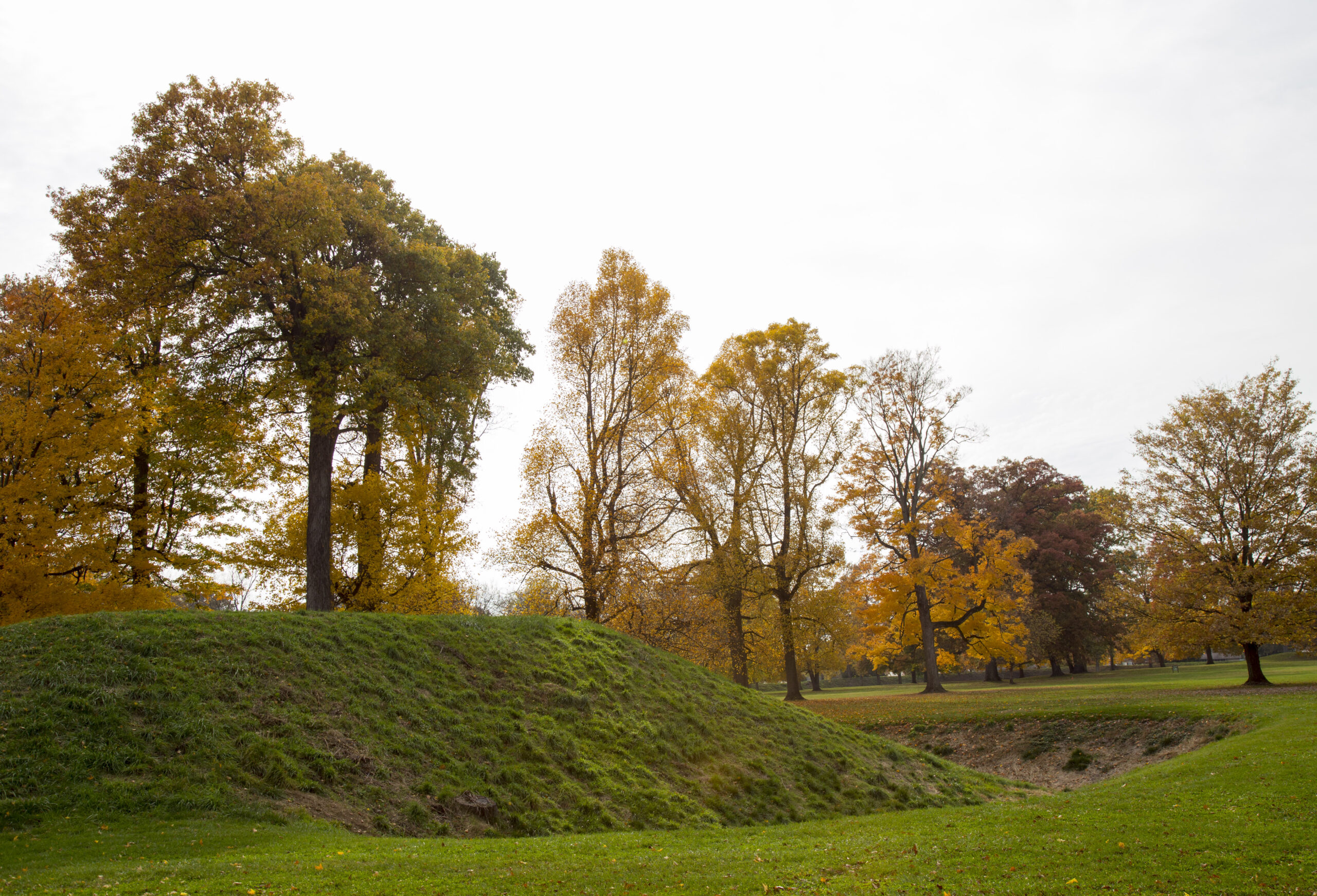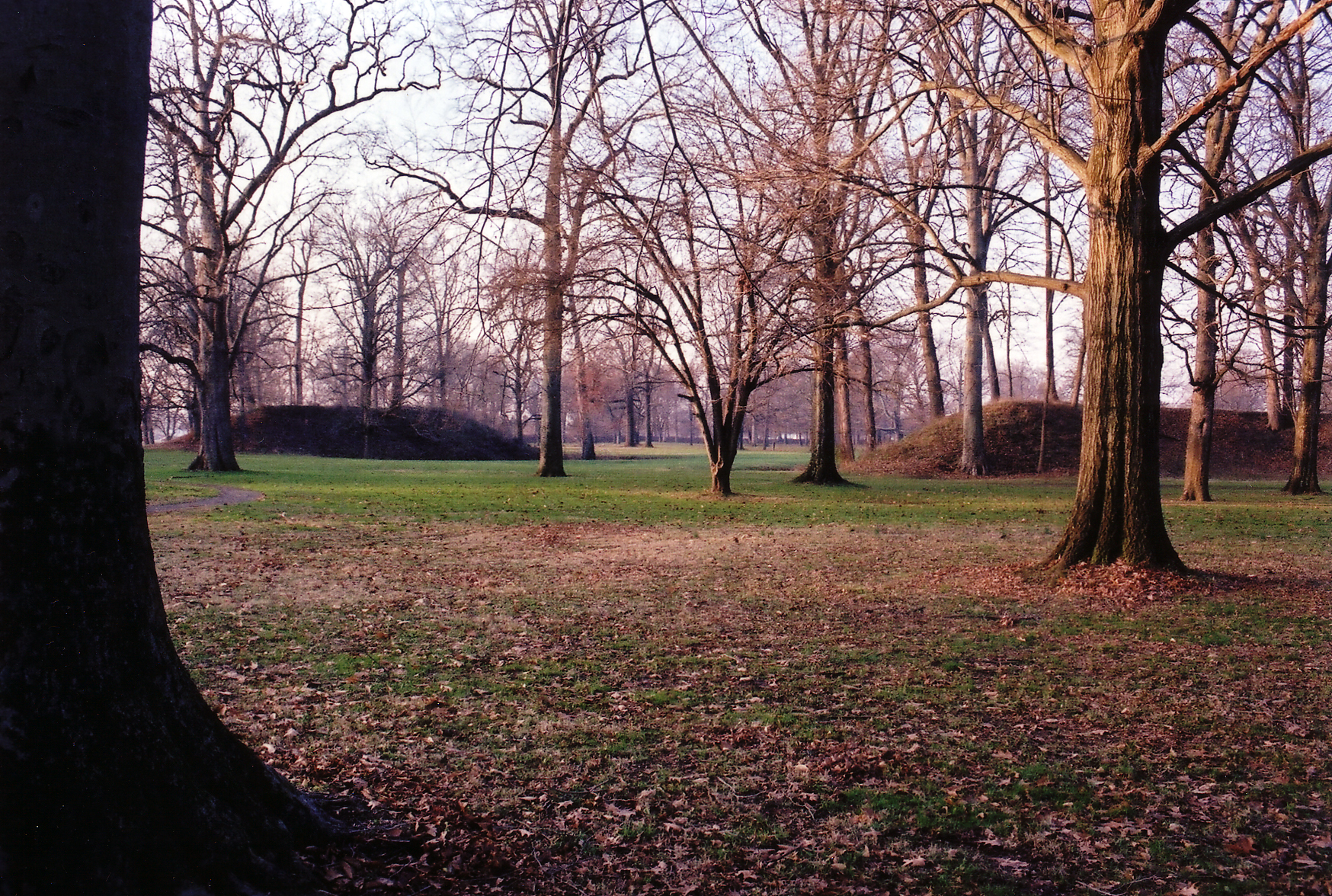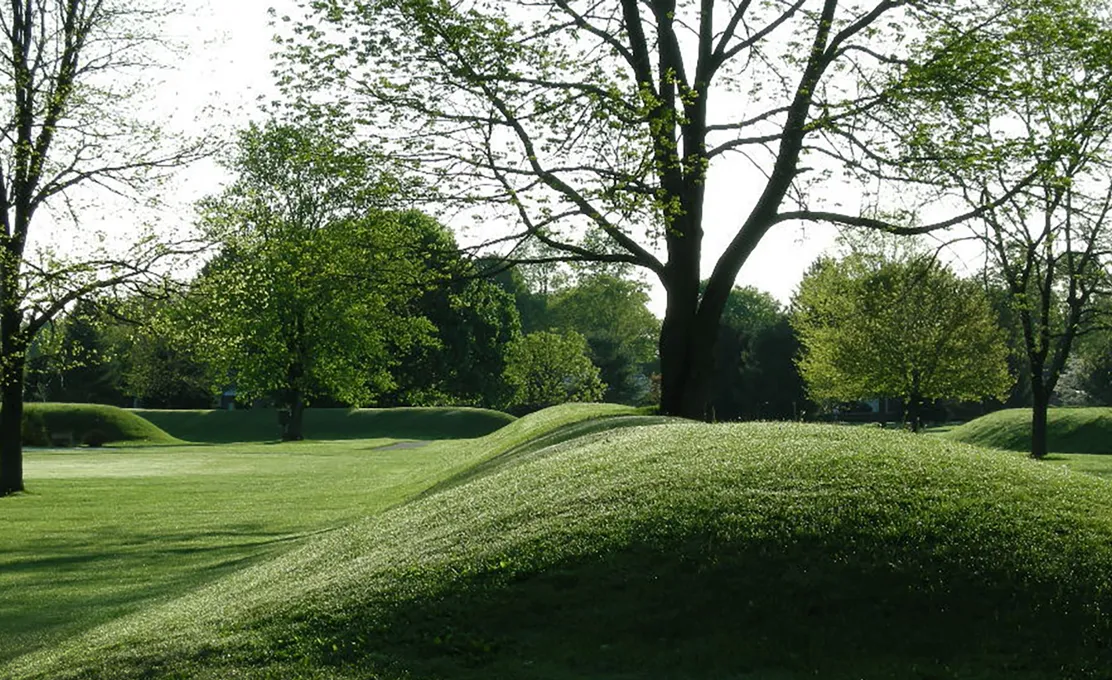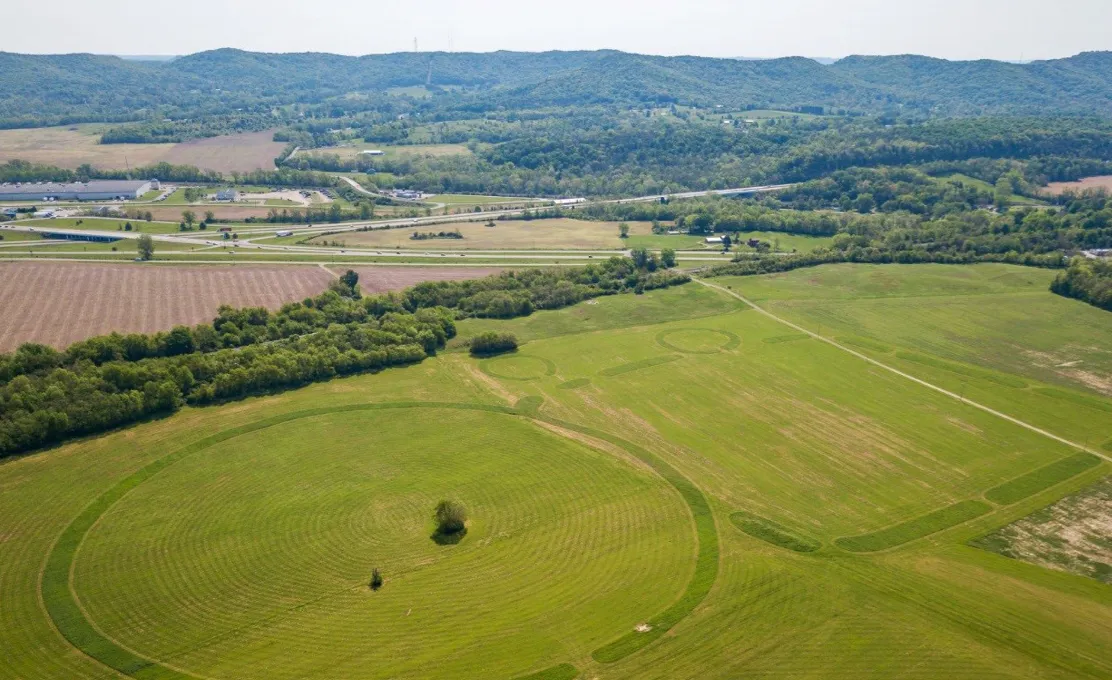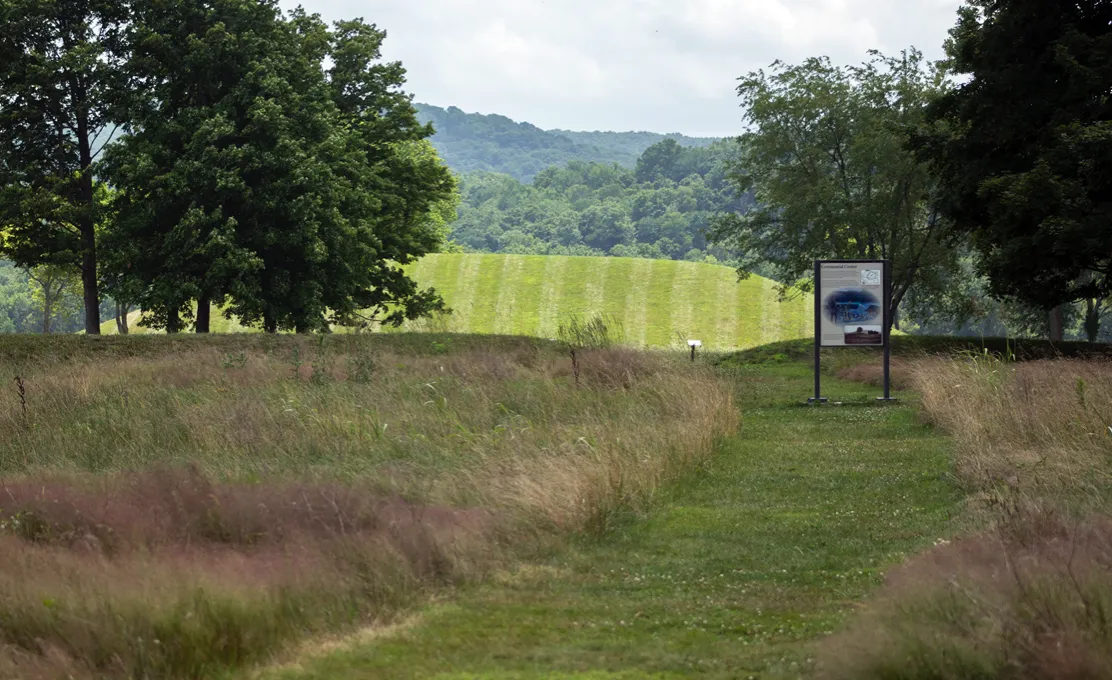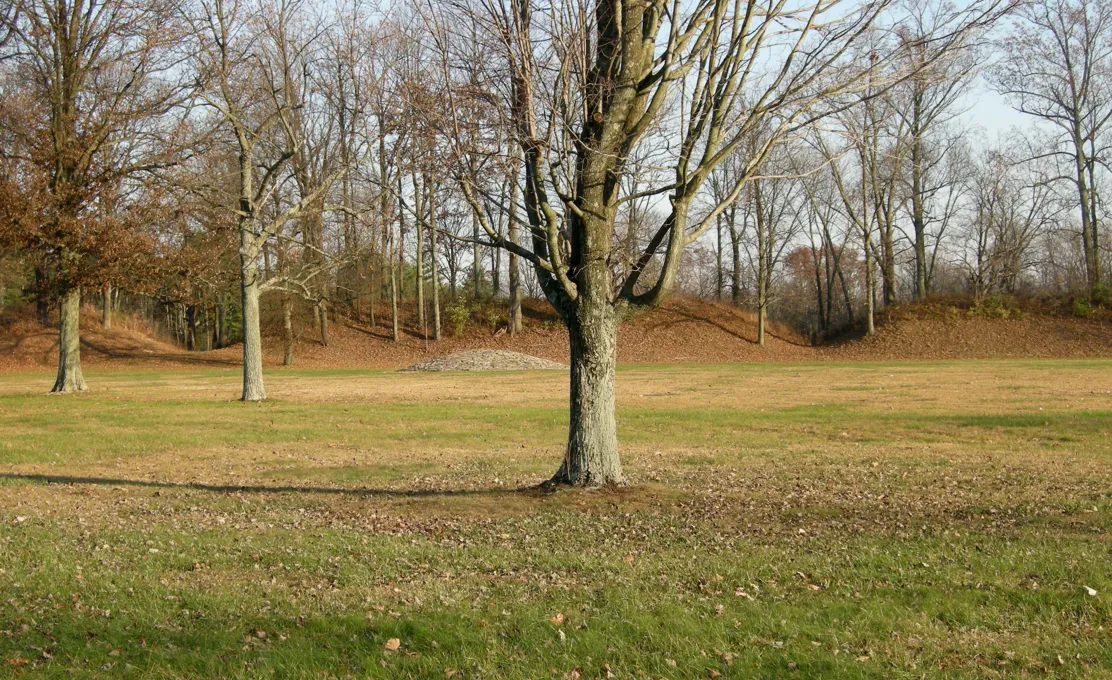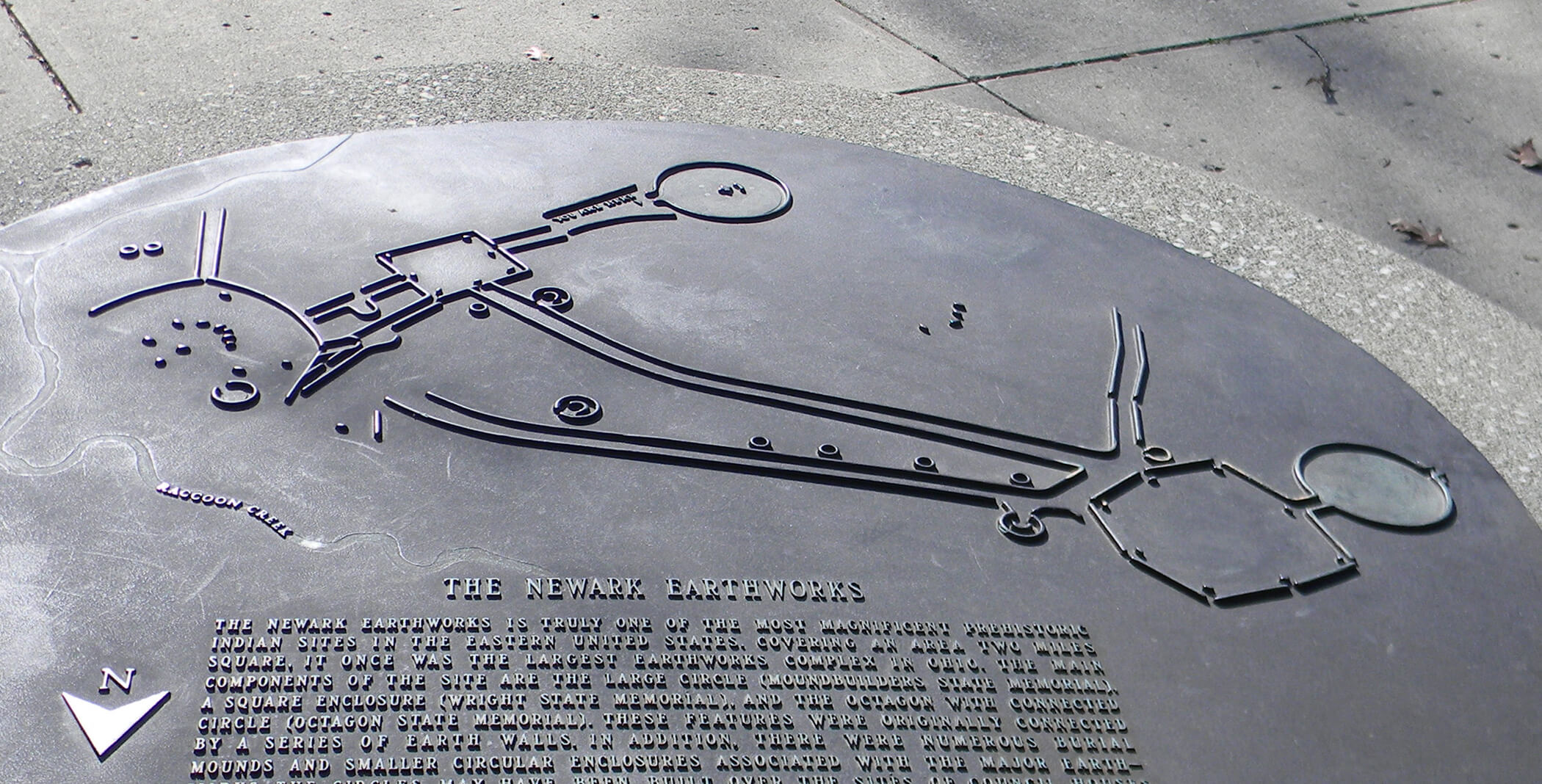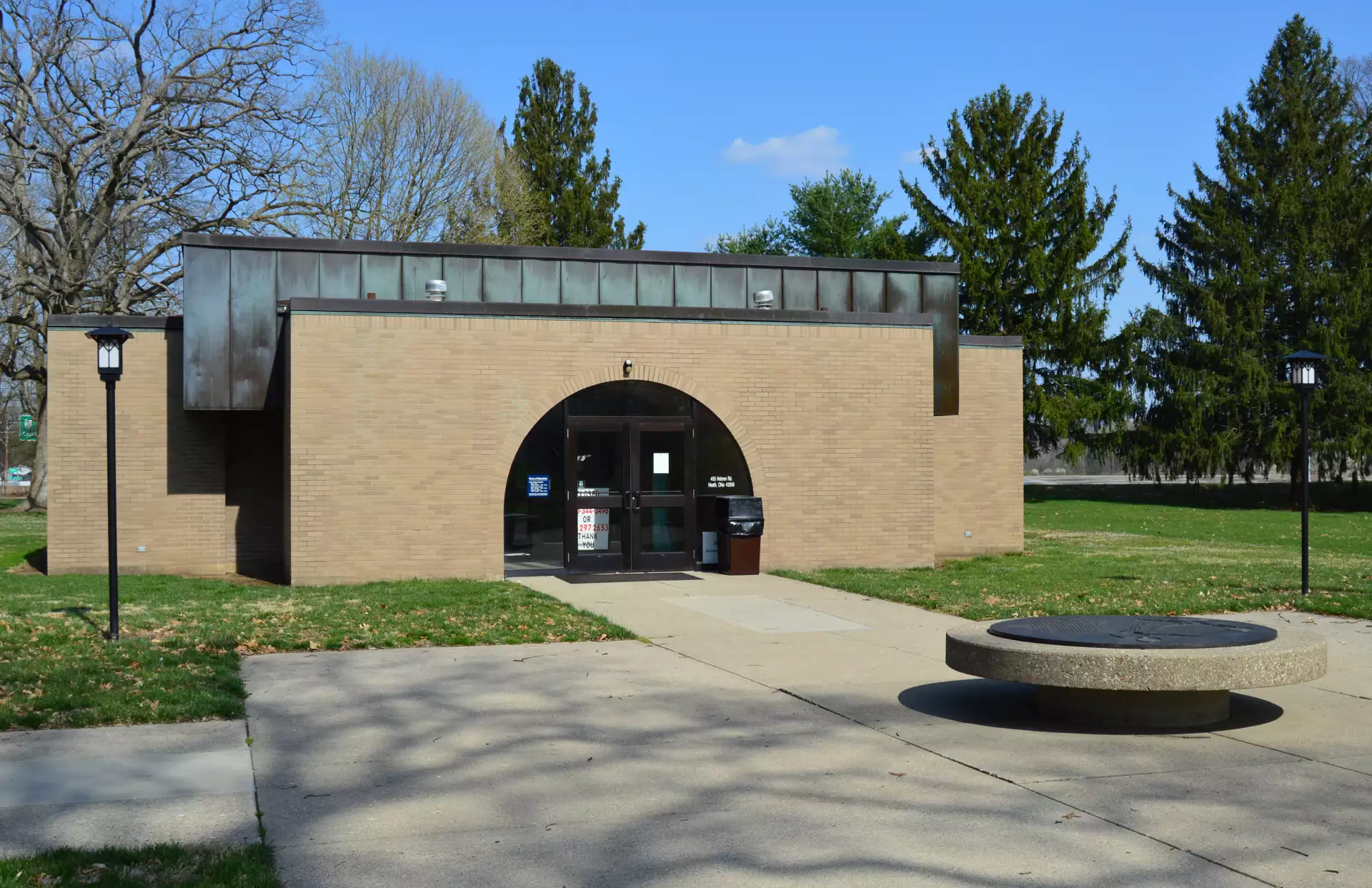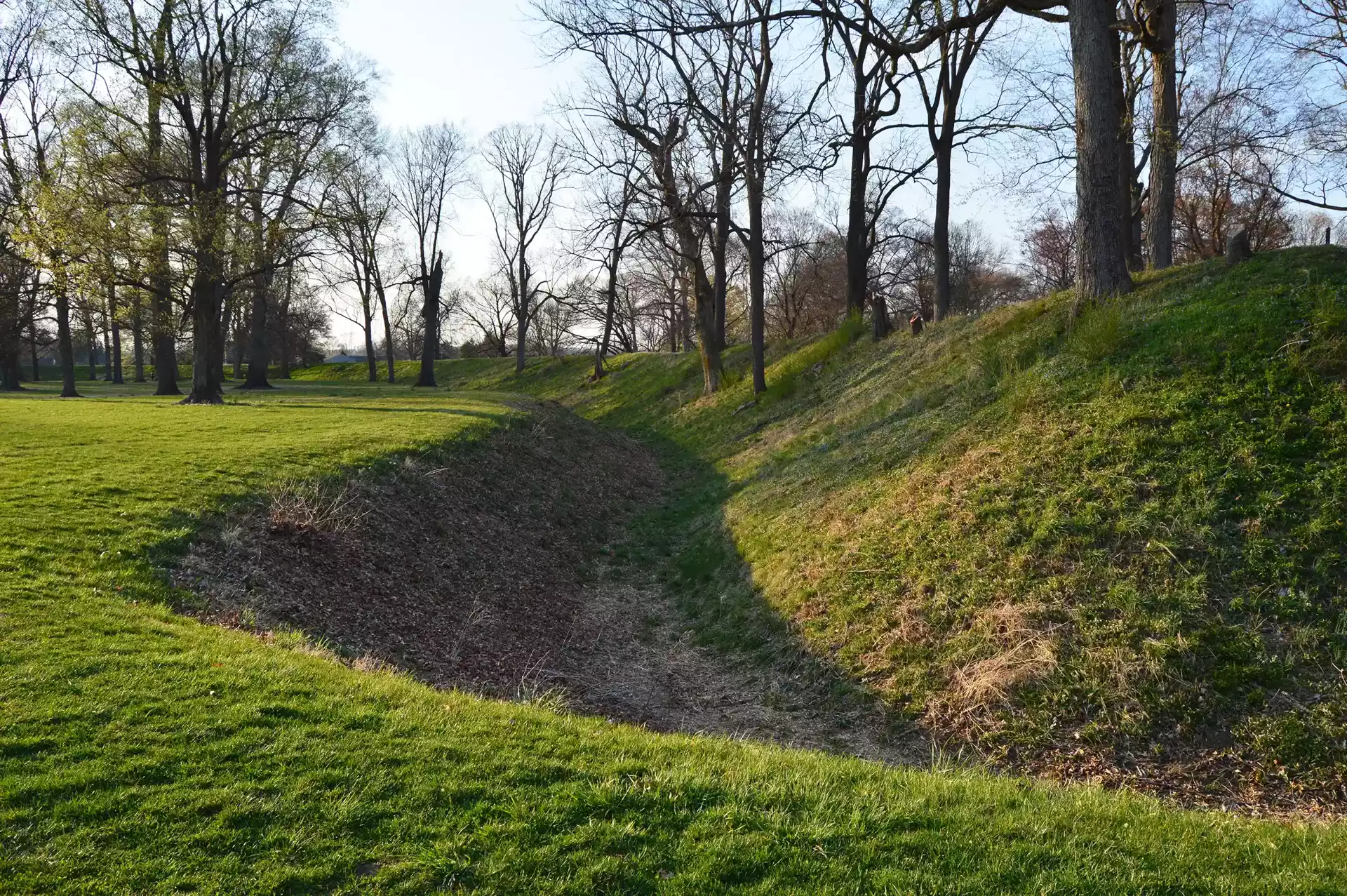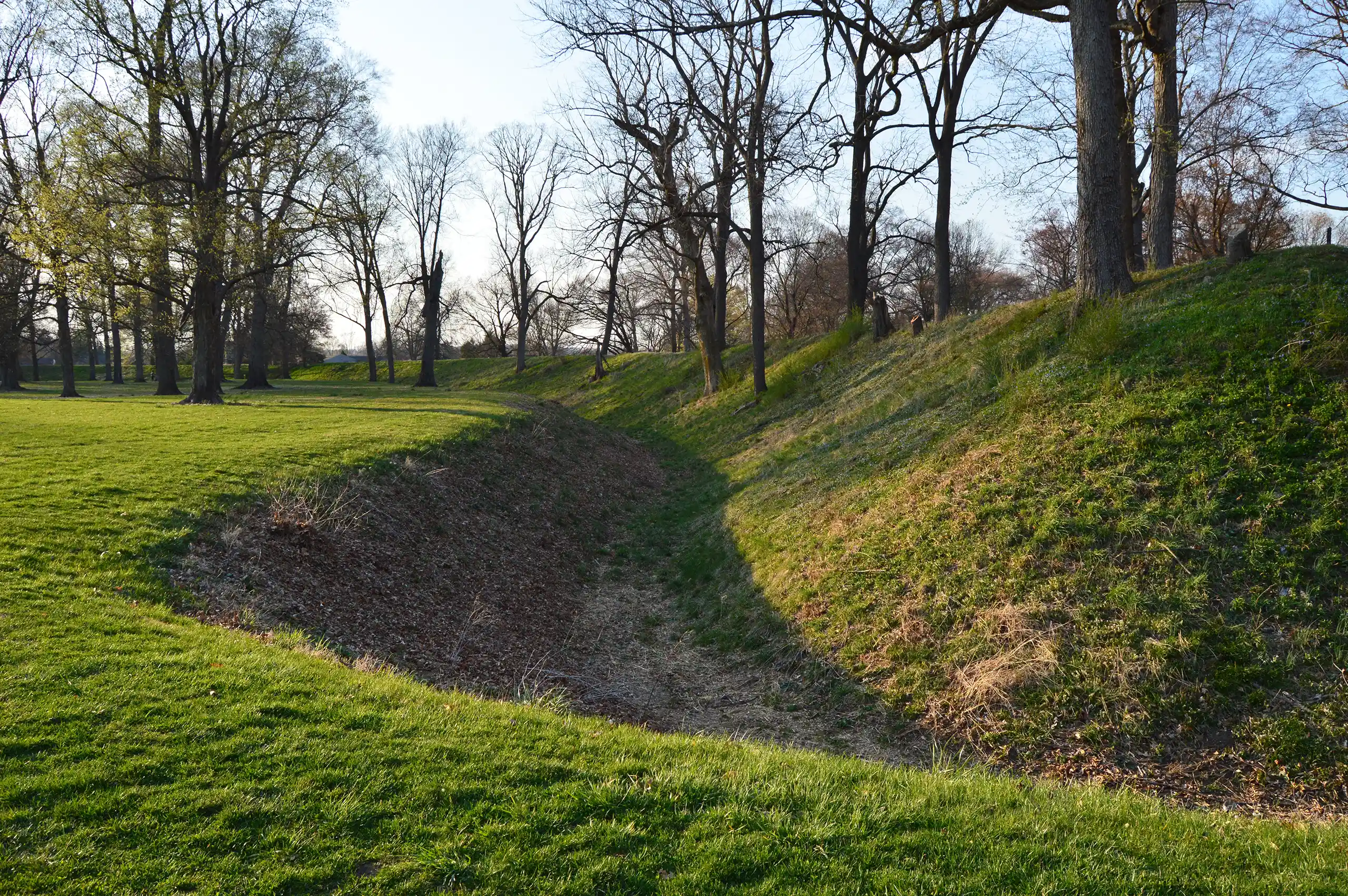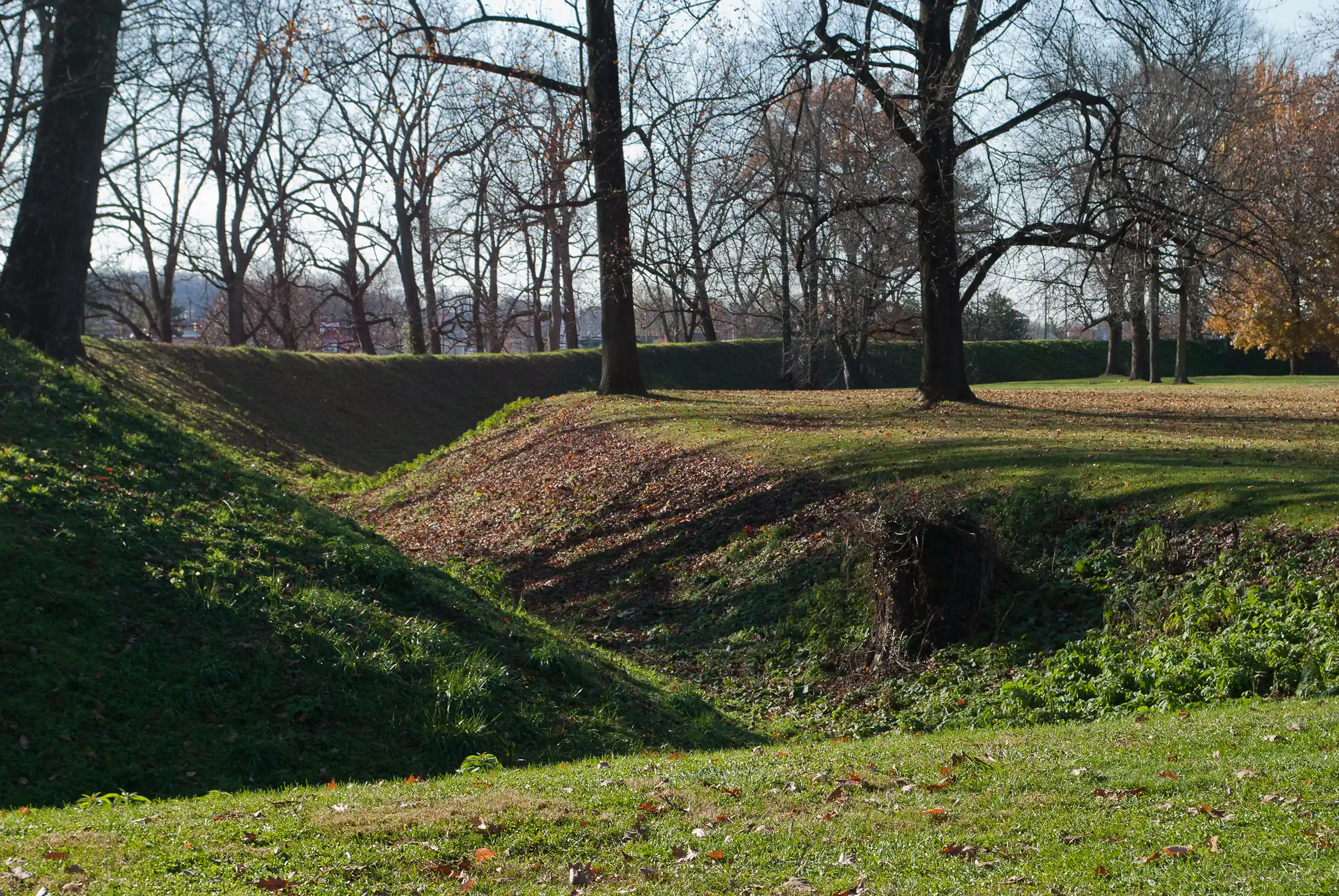Great Circle Earthworks
Newark, OH
The Great Circle at Newark is one of the largest geometric enclosures built by the Hopewell culture. It is nearly 1,200 feet in diameter and enclose nearly 30 acres —that’s almost 23 football fields! But its size is only one of the things that makes this earthwork so impressive. The more you learn about the Great Circle, the more you understand how it got its name.
Visitor Info
455 Hebron Road
Heath, Ohio 43056
- Park grounds: Open dawn until dusk
- Museum and visitor center: Open Wednesday–Saturday, 10 a.m. to 4 p.m. and on Sunday, Noon to 4 p.m. Admission is free.
- Tours: A free tour is offered on the first Friday of the month from April–November with Archaeologist Brad Lepper, departing at 12:30 p.m. from the Great Circle Museum. Regular guided tours of the Great Circle are $10 and offered from March–November at 2 p.m. on Thursdays, Fridays and Saturdays. Tours will include a 45 min. walk through the Great Circle. No preregistration required.
Coordinates:
40.0402671 °N
82.4277555 °W
What you'll see
The Great Circle Earthworks was a place of gathering and ceremony. A monumental gateway nearly 200 feet wide leads to the interior of the circle. The walls of Great Circle are between 8 and 13 feet high. They surround a ditch between 8 and 13 feet deep that once was filled with water. The interior of the Great Circle is so huge, the Great Pyramid of Giza (another UNESCO World Heritage Site) could fit inside of it!
At the center of the Great Circle is a large mound known as Eagle Mound for its symmetrical, somewhat winged shape. In the park to the north and east of the Great Circle there are two restored segments of the low perimeter walls that once encircled the entire Newark Earthworks complex. Learn more about this earthwork in the Ohio History Connection’s visitorʻs center located outside the Great Circle’s gateway.
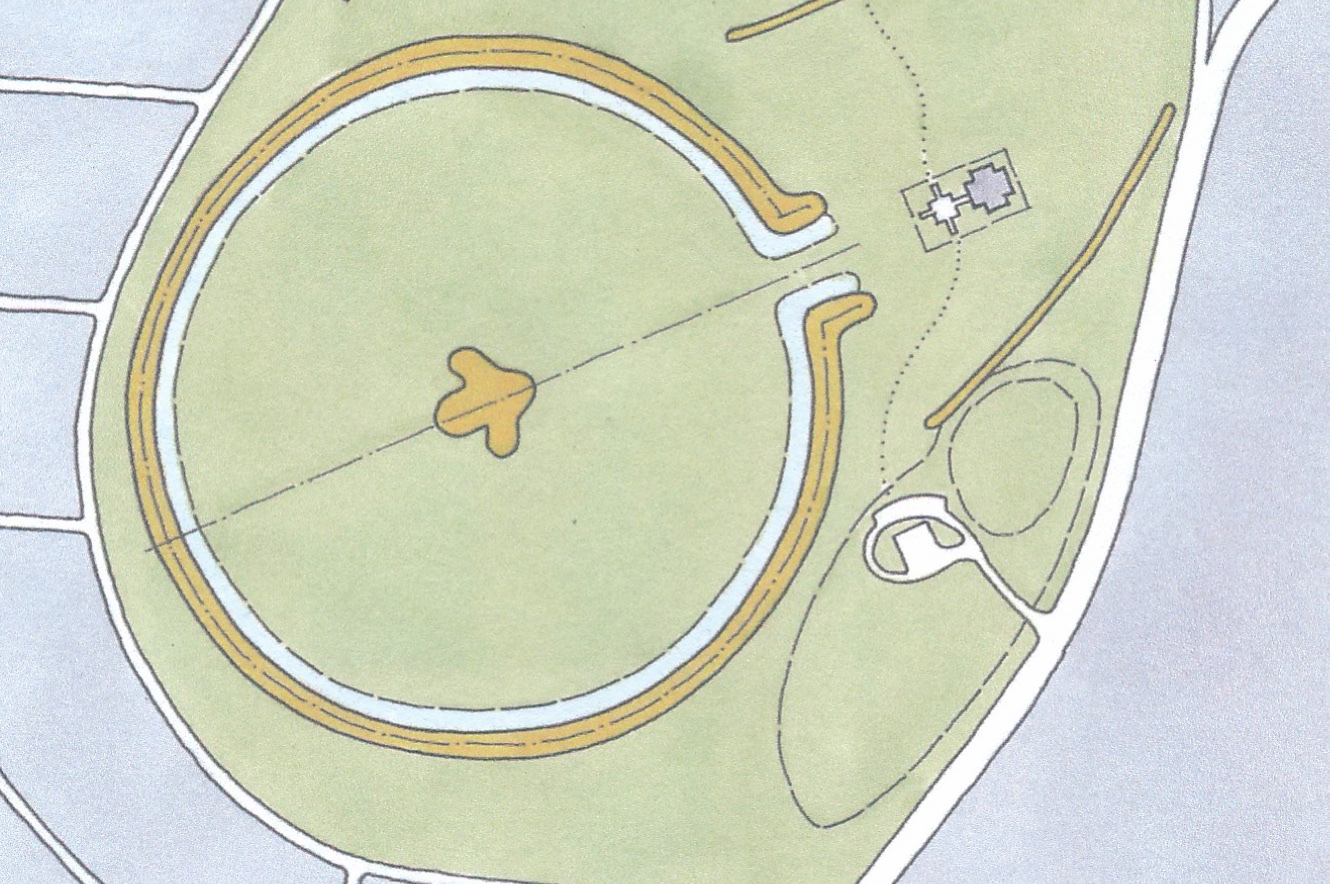
Archaeology & Artifacts
There have been very few archaeological investigations at the Great Circle. As a result, only a handful of Hopewell-era artifacts have been found here. Two copper ornaments, one shaped like a beaver and the other a crescent, were found on the floor of a timber building that was taken down and buried beneath Eagle Mound. These artifacts likely were worn by Hopewell ceremonial leaders. They help to show how far people came to participate in the ceremonies at the Hopewell earthworks. The copper to make those ornaments came from either southern Ontario or North Carolina. Hopewell artifacts found at other earthworks include ornaments made from rare raw materials gathered from across the country— such as seashells from the Gulf of Mexico, mica from North Carolina’s Blue Ridge Mountains, and fossilized shark teeth from the Chesapeake Bay.
The few archaeological investigations that have been done in and near the Great Circle have added to our knowledge of the Hopewell culture, but only a small portion of the site has been explored. Given its excellent state of preservation, the Great Circle Earthworks has much more to tell us about what was going on at this amazing place 2,000 years ago.
